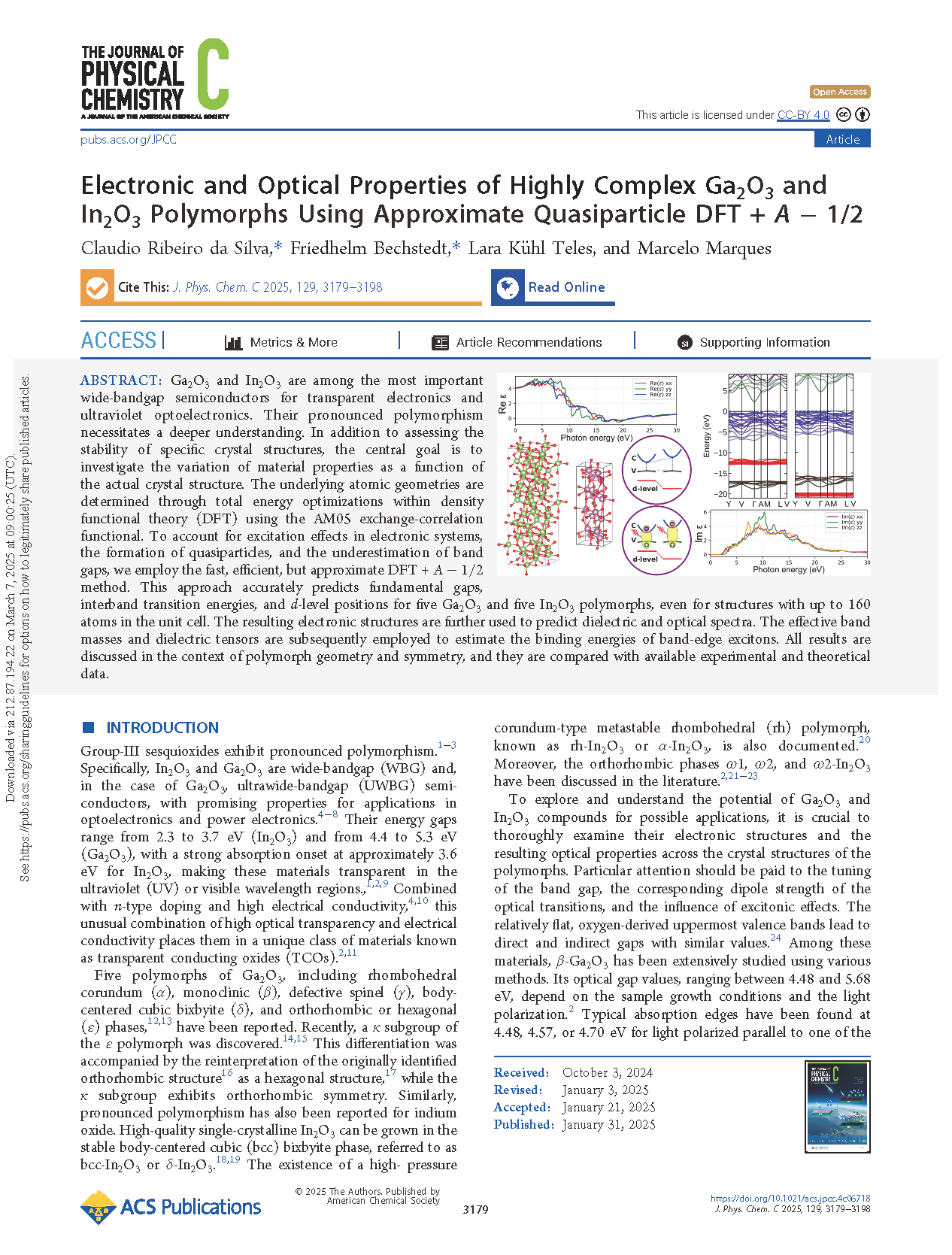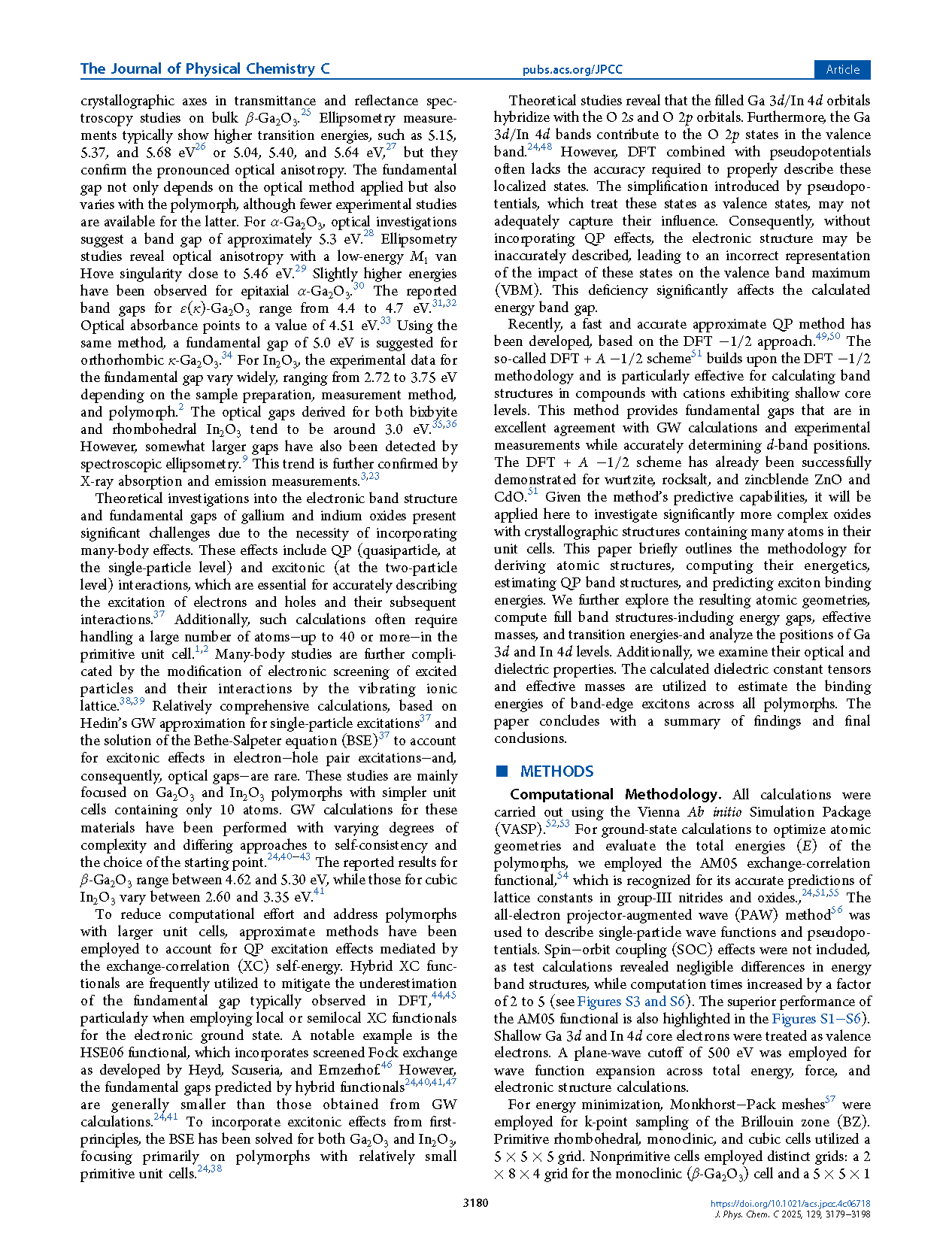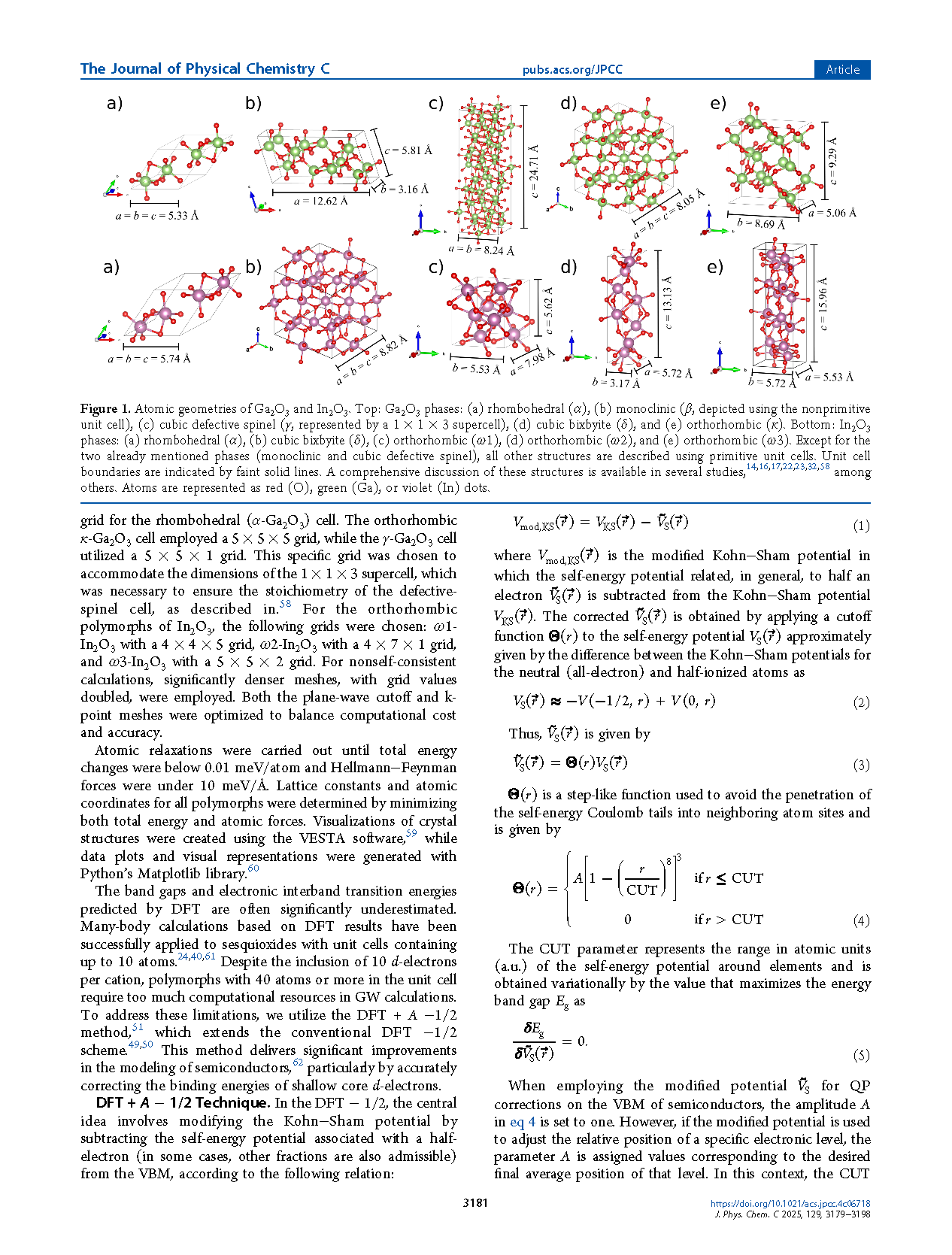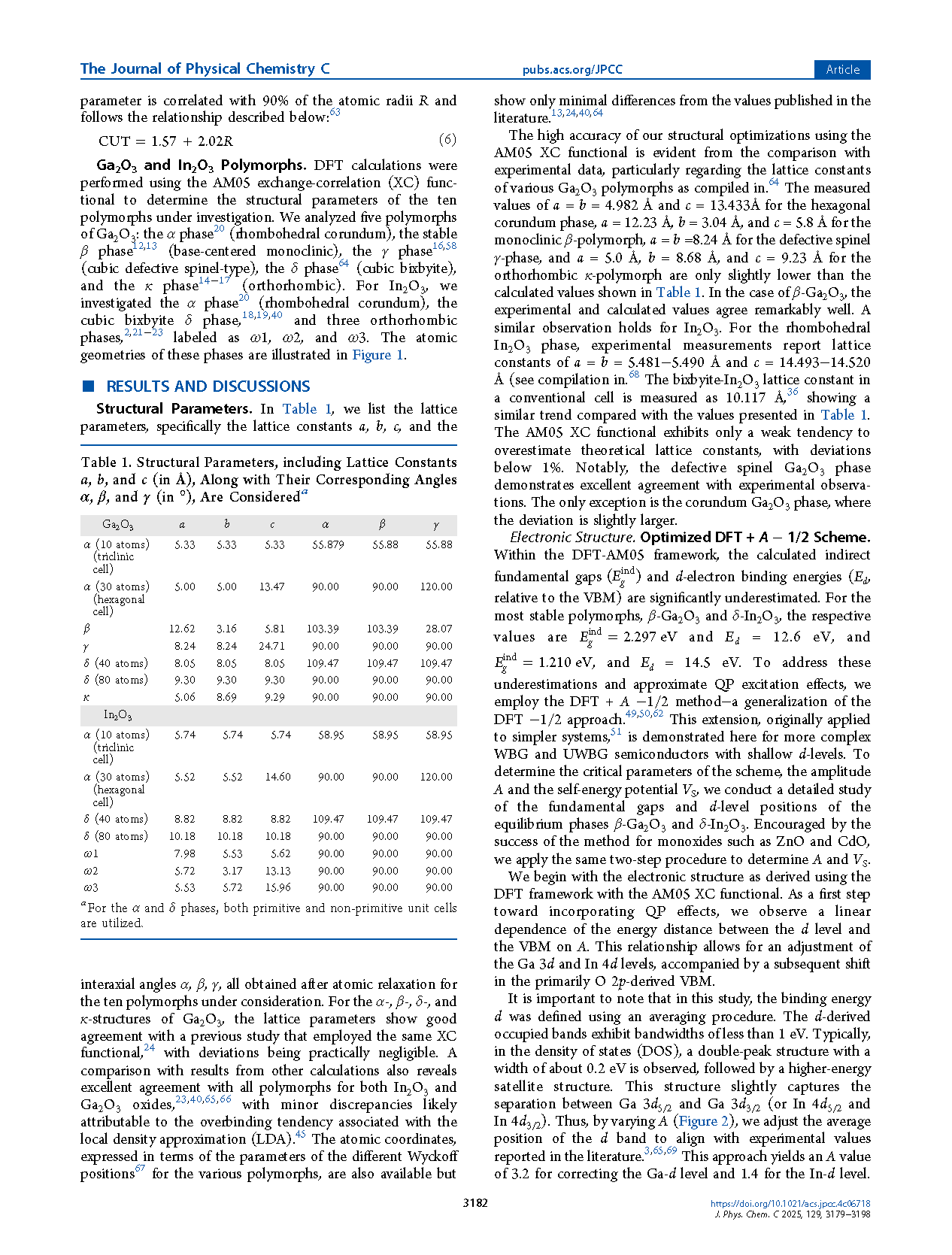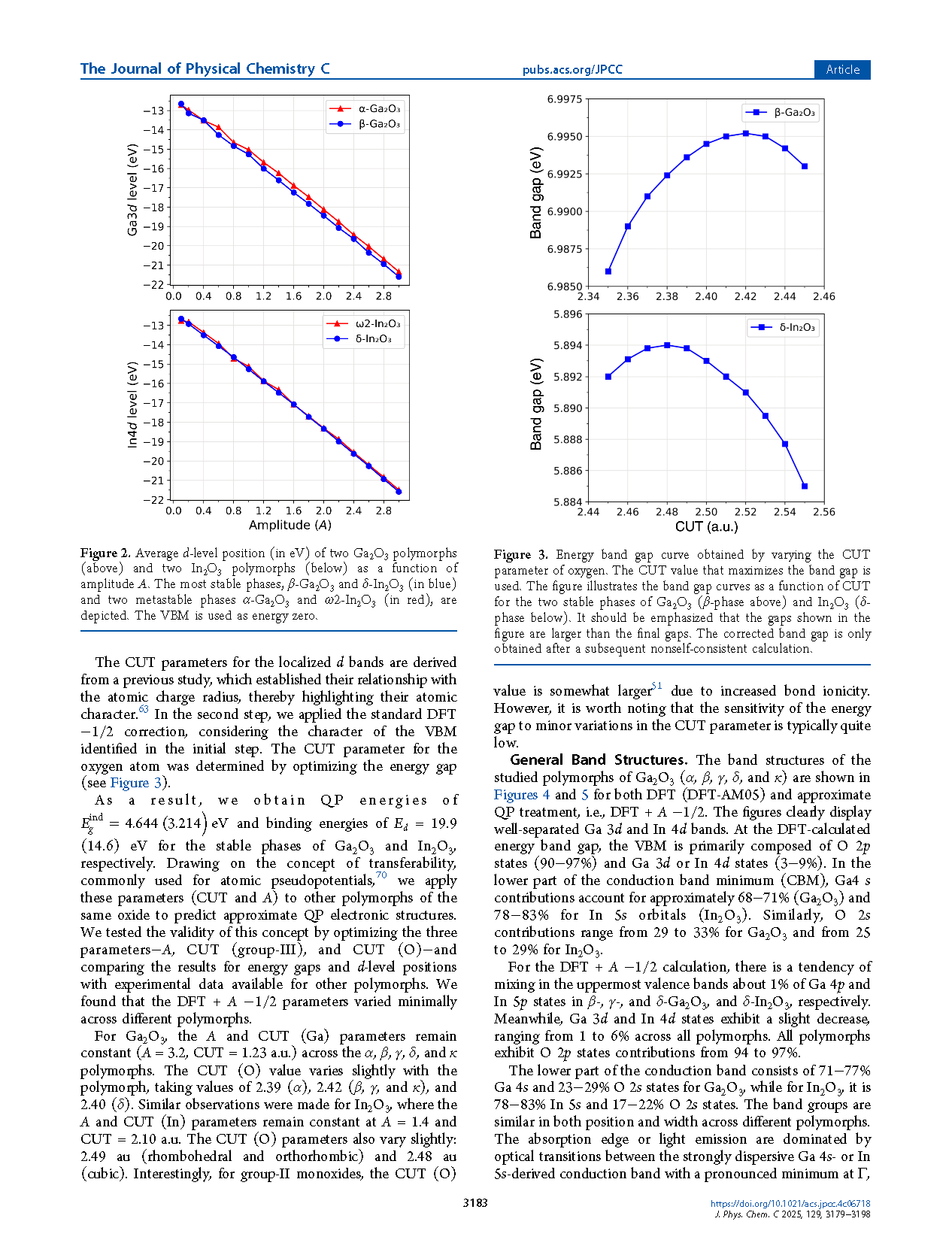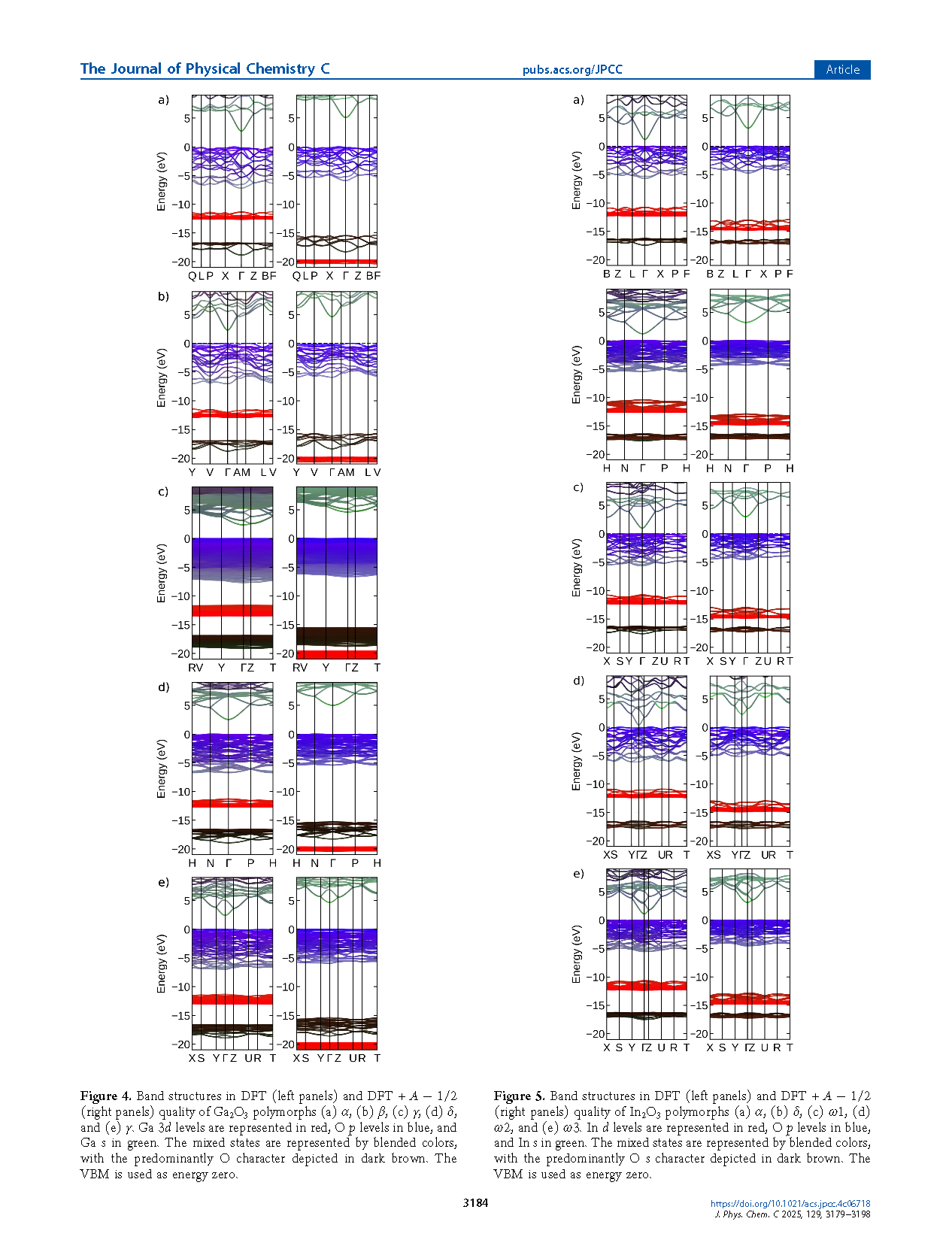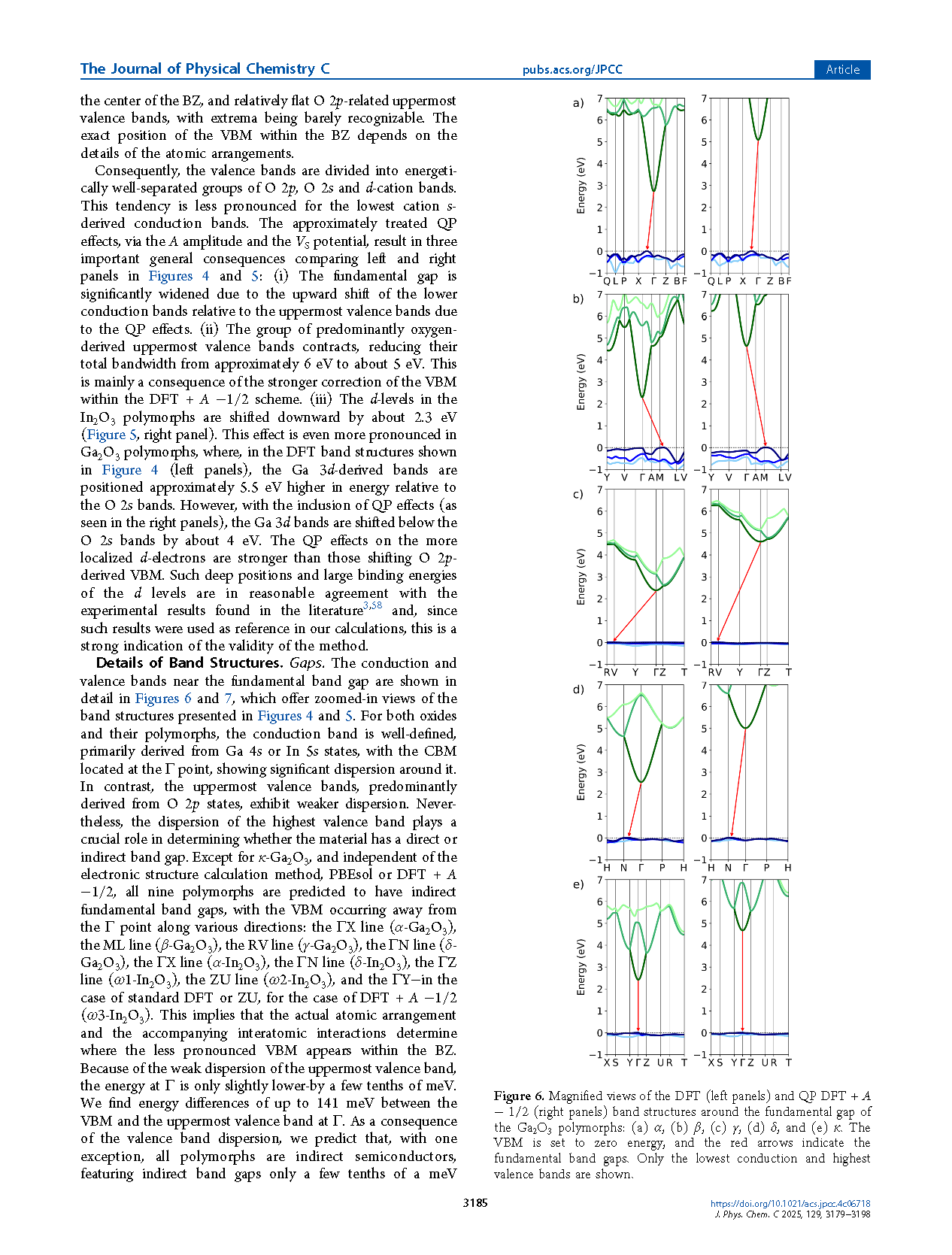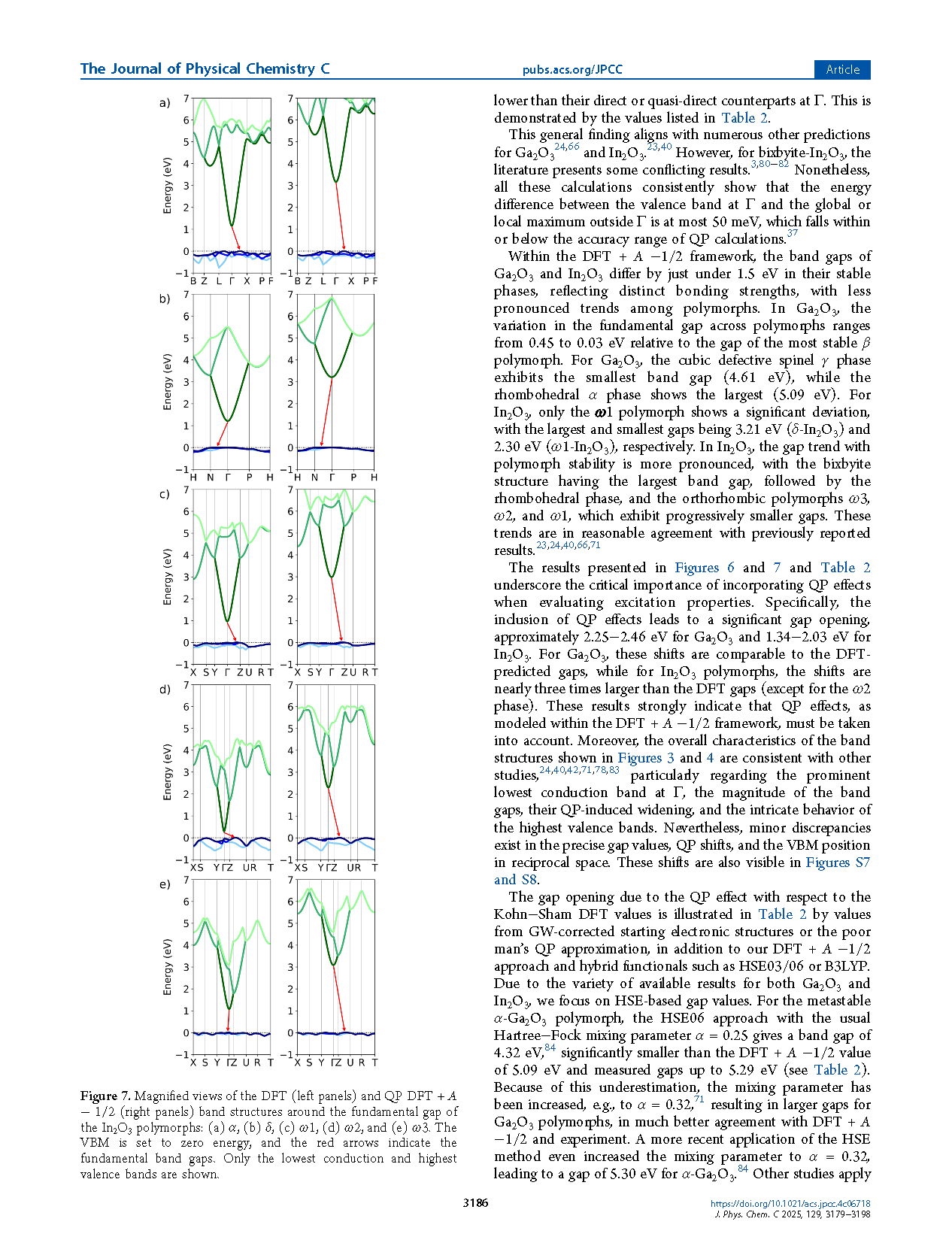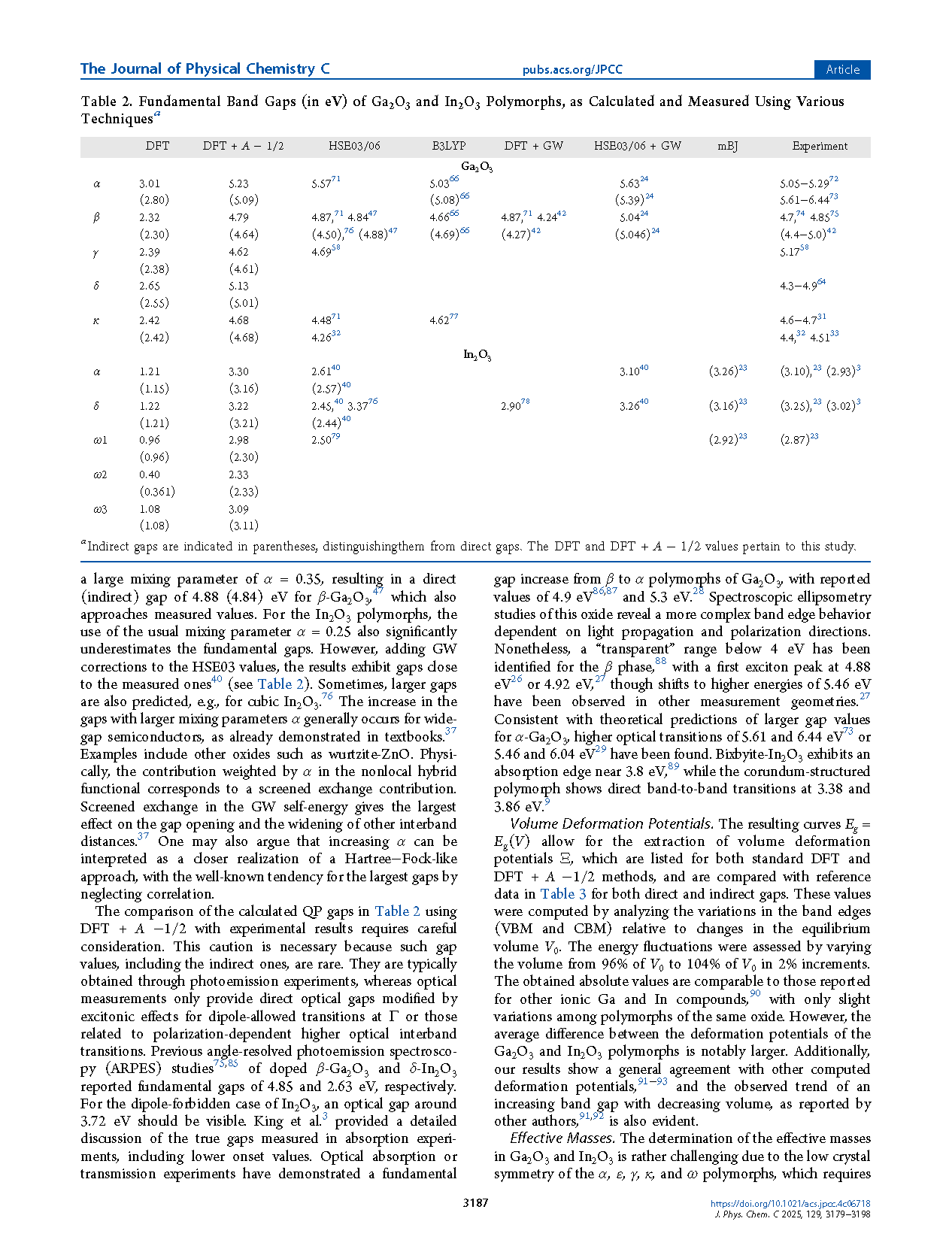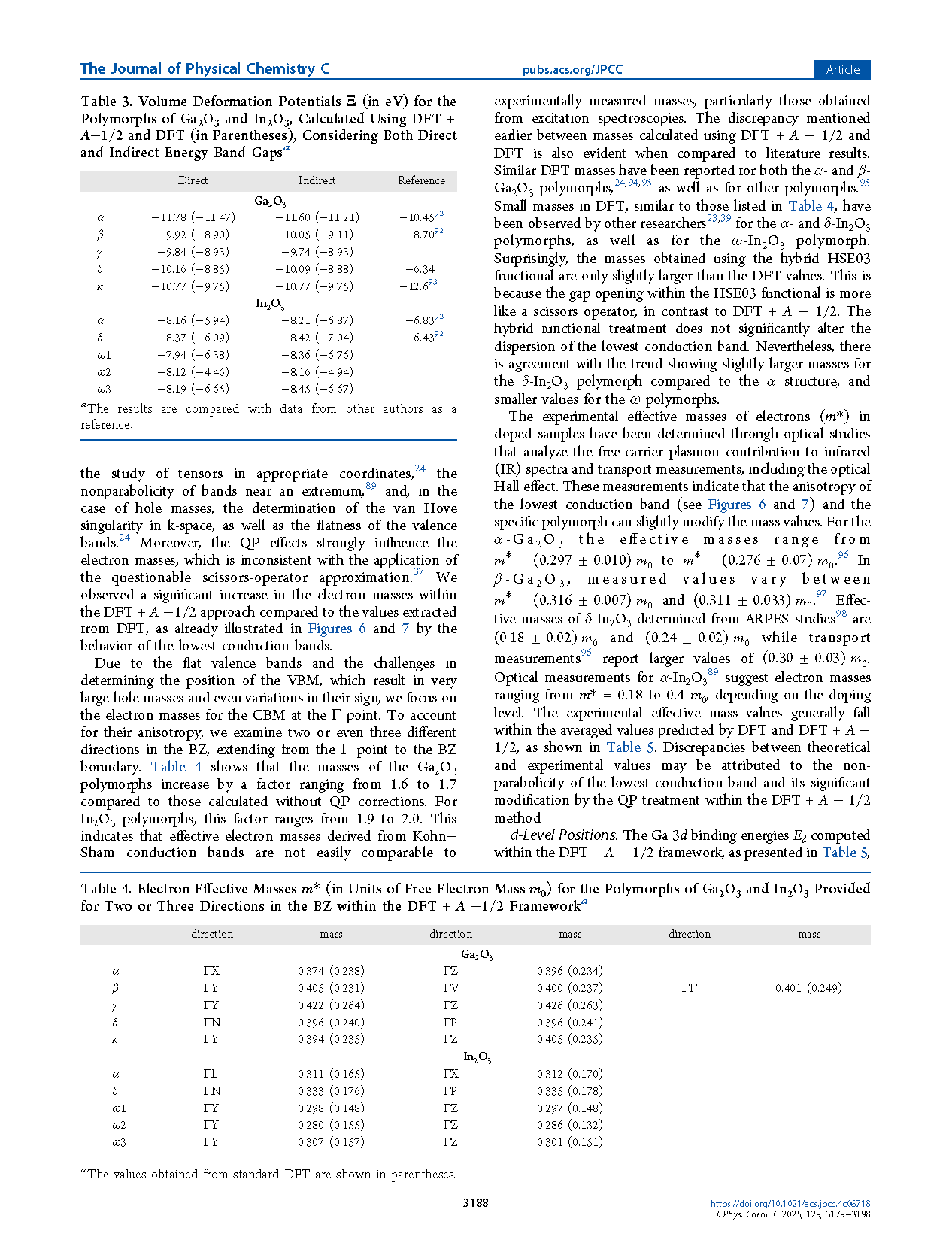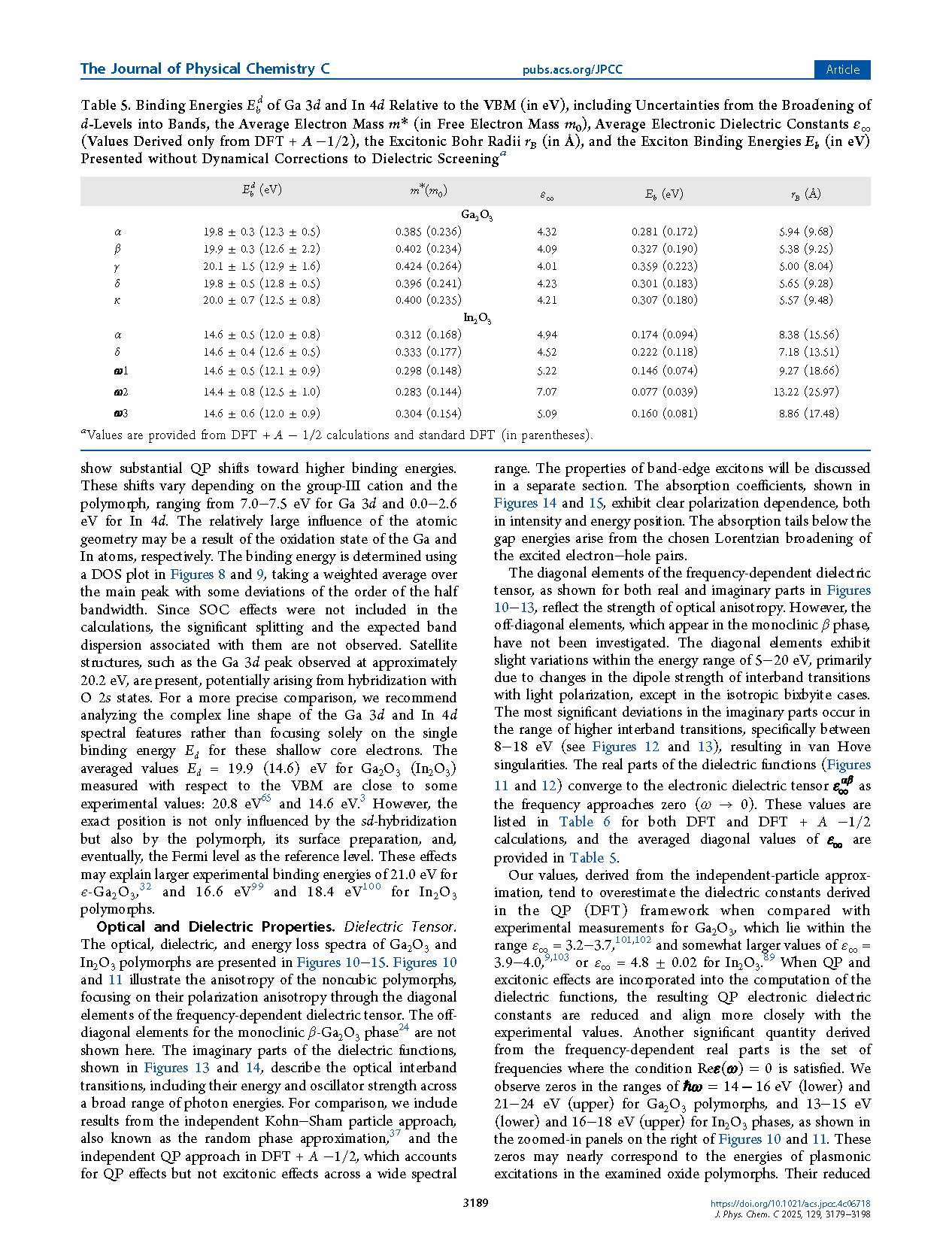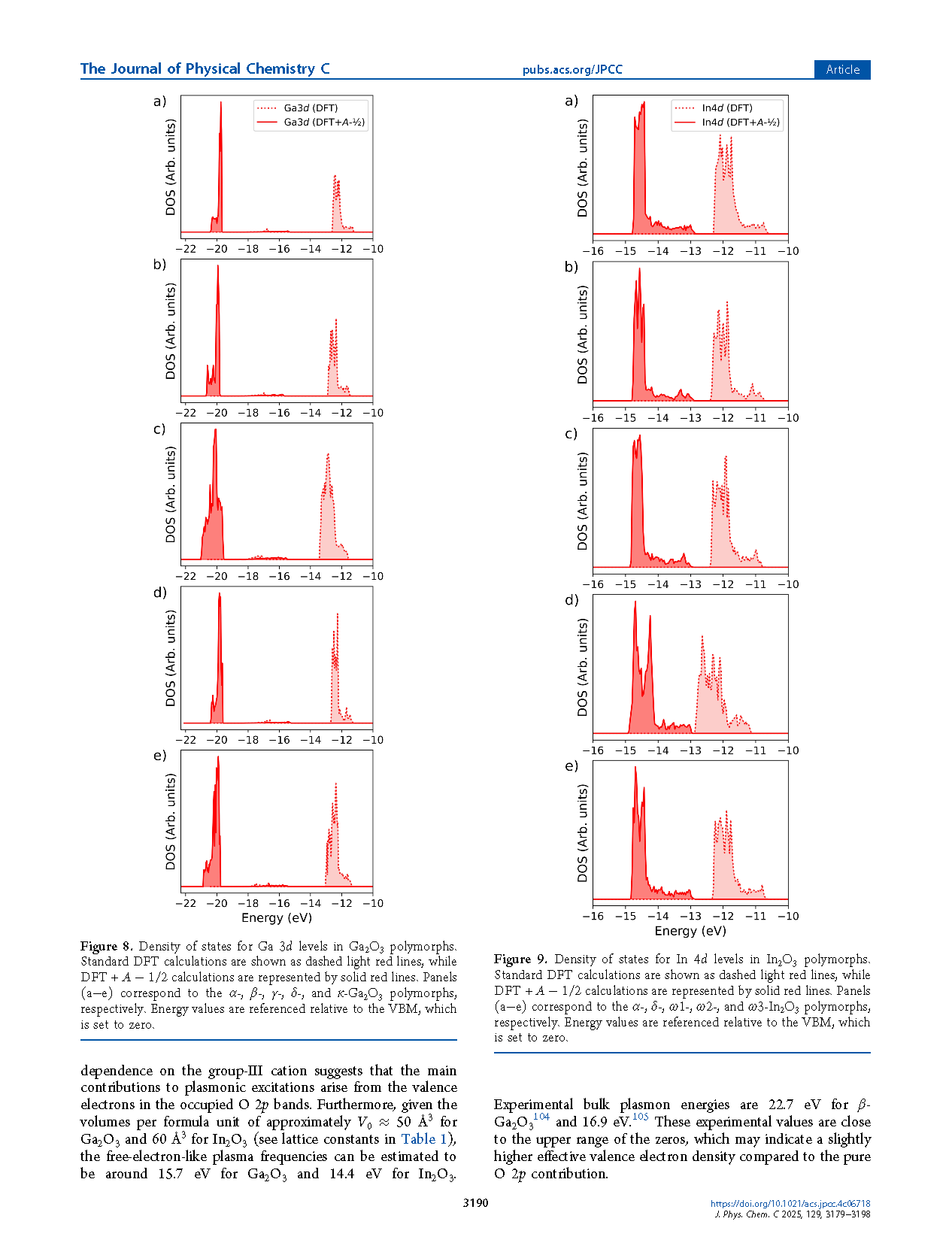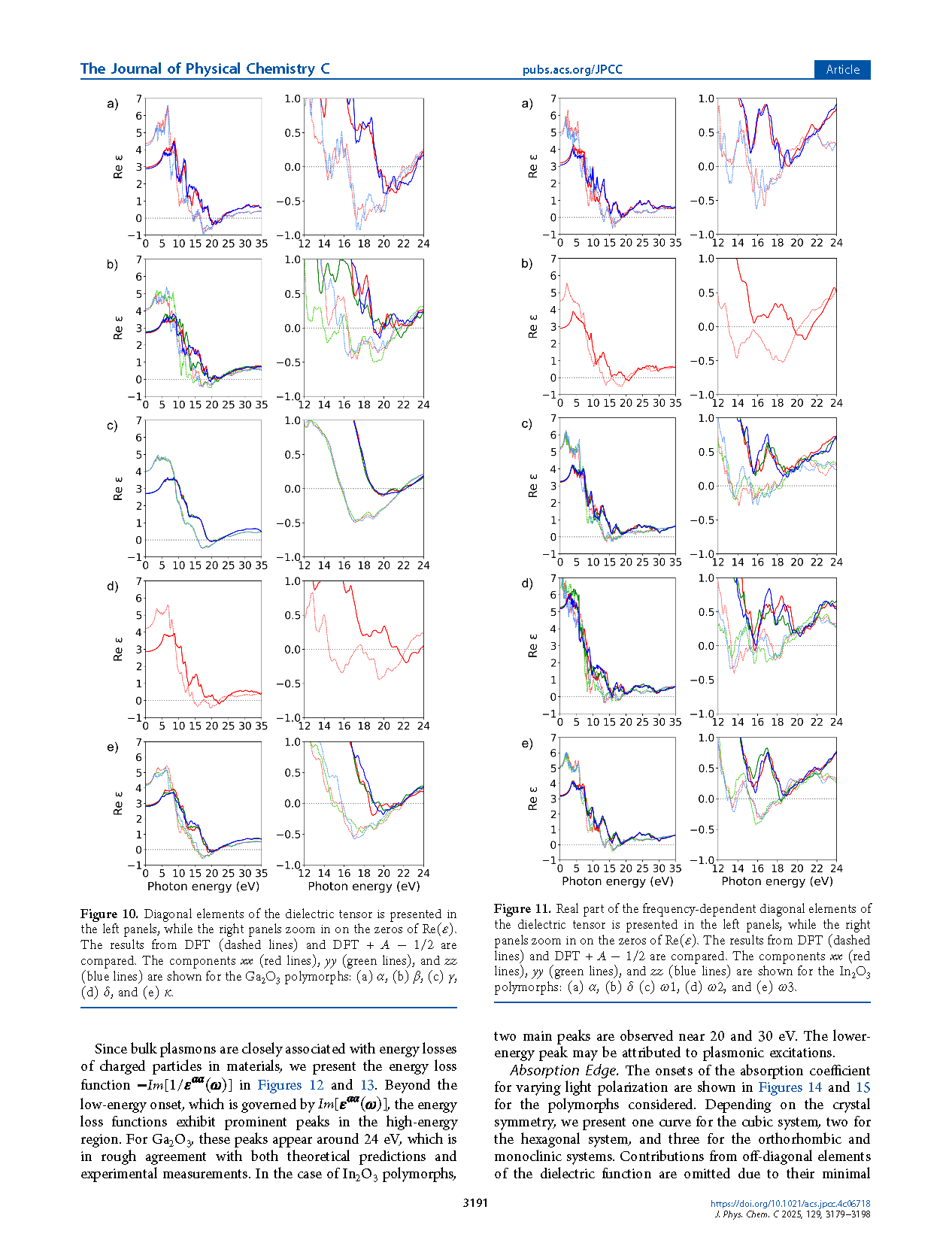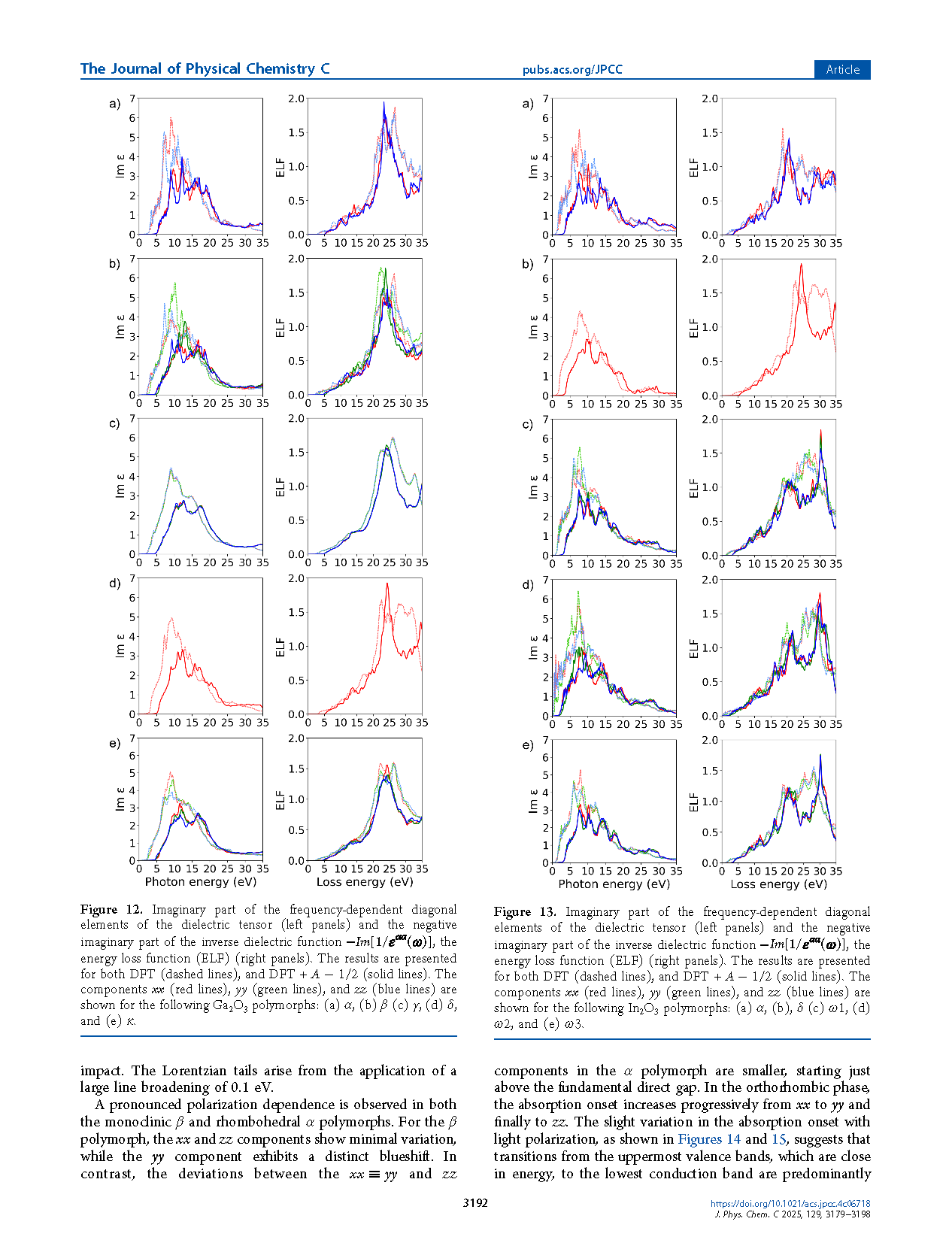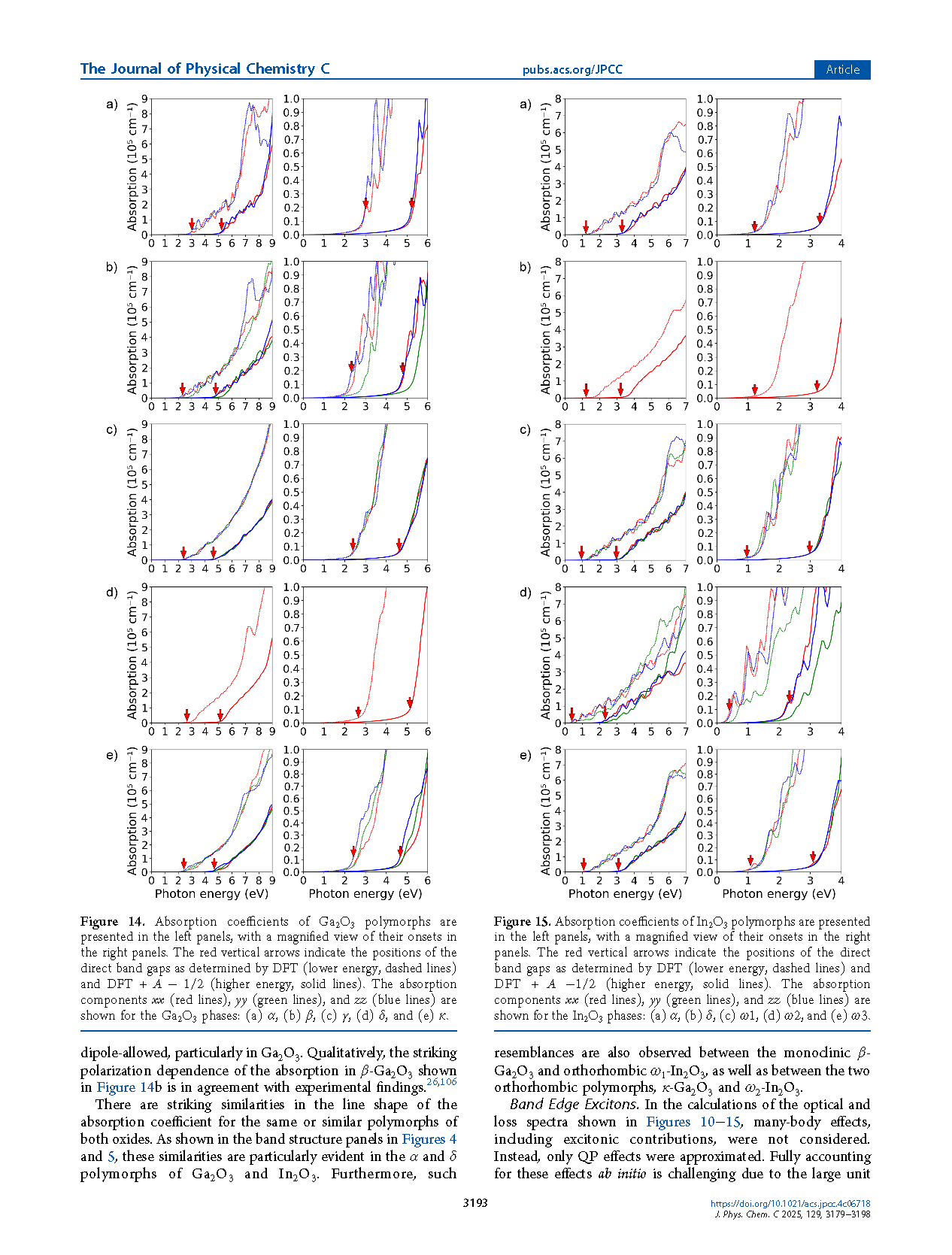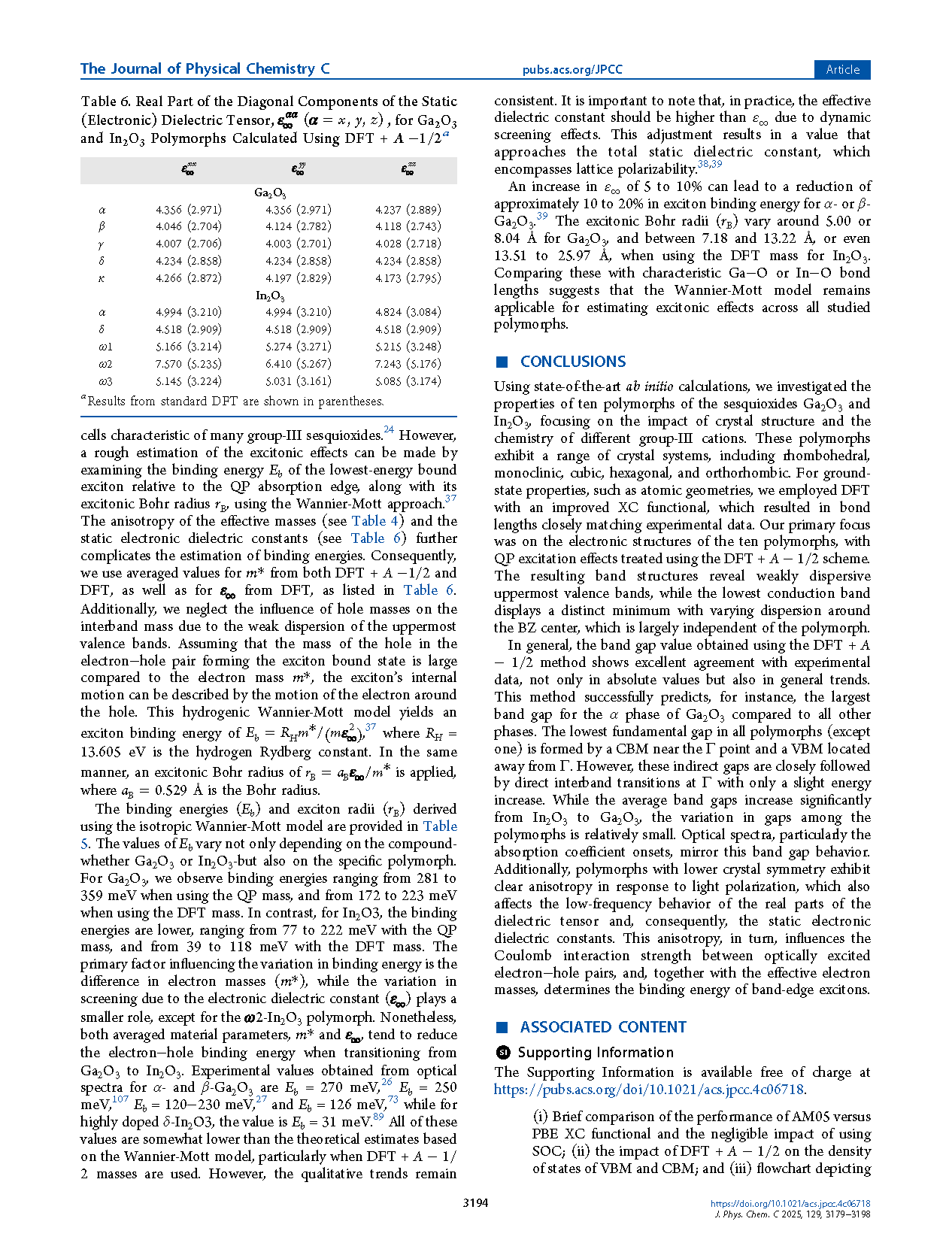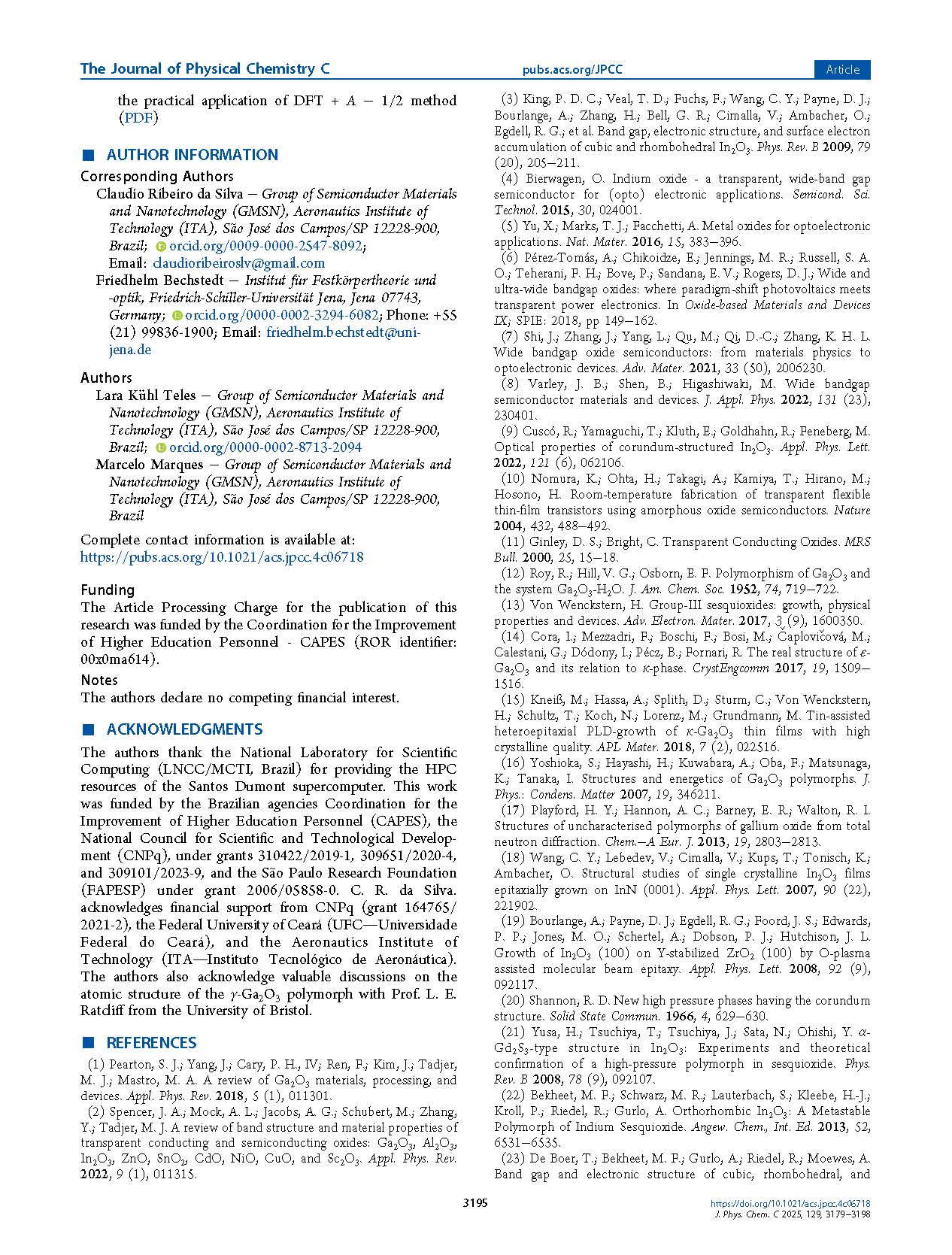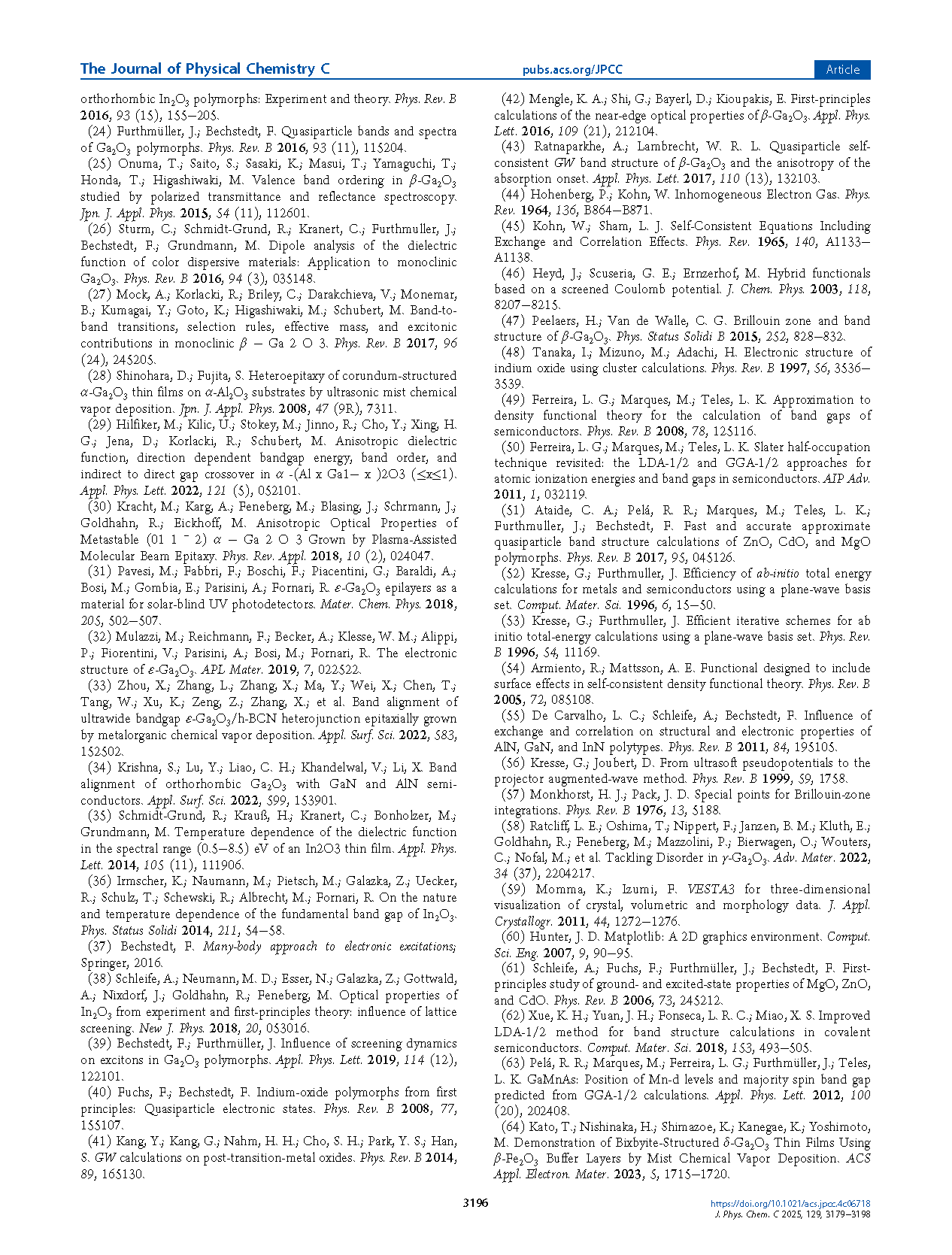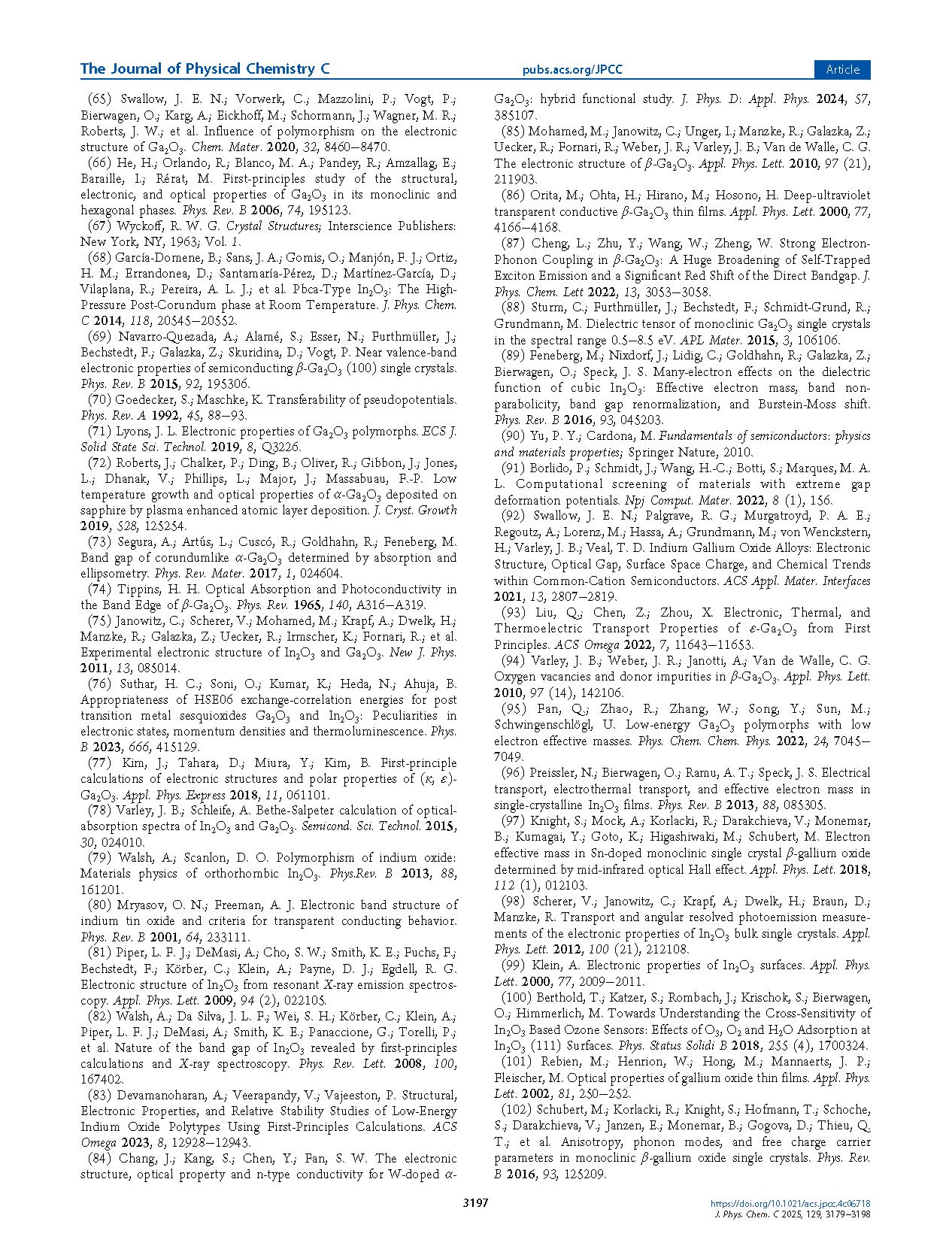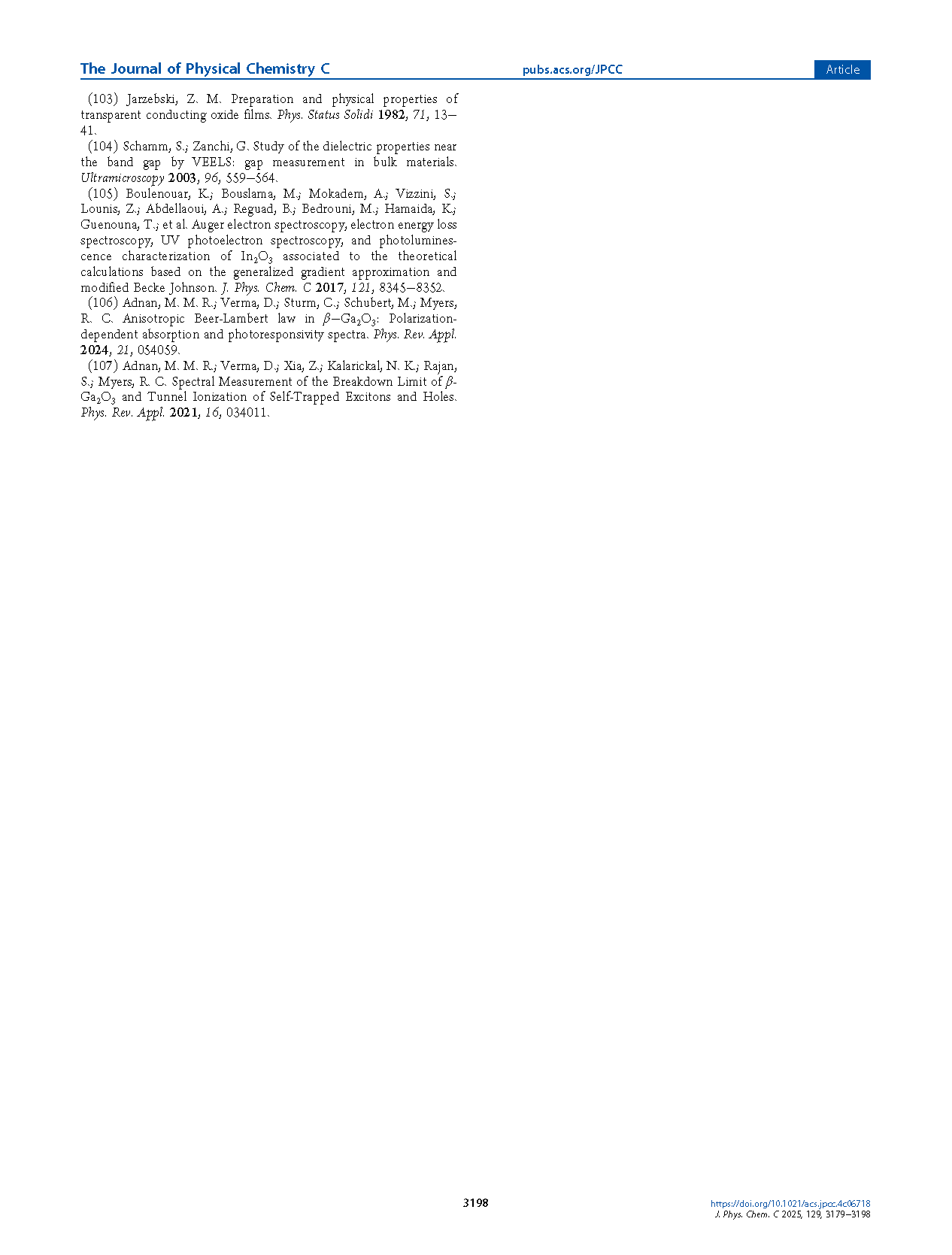

【International Papers】Electronic and Optical Properties of Highly Complex Ga₂O₃ and In₂O₃ Polymorphs Using Approximate Quasiparticle DFT + A – 1/2
日期:2025-04-01阅读:525
Researchers from the Aeronautics Institute of Technology (ITA) have published a dissertation titled " Electronic and Optical Properties of Highly Complex Ga2O3 and In2O3 Polymorphs Using Approximate Quasiparticle DFT + A – 1/2" in The Journal of Physical Chemistry C.
Abstract
Ga2O3 and In2O3 are among the most important wide-bandgap semiconductors for transparent electronics and ultraviolet optoelectronics. Their pronounced polymorphism necessitates a deeper understanding. In addition to assessing the stability of specific crystal structures, the central goal is to investigate the variation of material properties as a function of the actual crystal structure. The underlying atomic geometries are determined through total energy optimizations within density functional theory (DFT) using the AM05 exchange-correlation functional. To account for excitation effects in electronic systems, the formation of quasiparticles, and the underestimation of band gaps, we employ the fast, efficient, but approximate DFT + A – 1/2 method. This approach accurately predicts fundamental gaps, interband transition energies, and d-level positions for five Ga2O3 and five In2O3 polymorphs, even for structures with up to 160 atoms in the unit cell. The resulting electronic structures are further used to predict dielectric and optical spectra. The effective band masses and dielectric tensors are subsequently employed to estimate the binding energies of band-edge excitons. All results are discussed in the context of polymorph geometry and symmetry, and they are compared with available experimental and theoretical data.
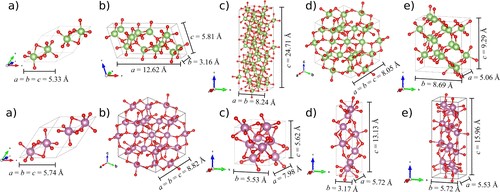
Figure 1. Atomic geometries of Ga2O3 and In2O3. Top: Ga2O3 phases: (a) rhombohedral (α), (b) monoclinic (β, depicted using the nonprimitive unit cell), (c) cubic defective spinel (γ, represented by a 1 × 1 × 3 supercell), (d) cubic bixbyite (δ), and (e) orthorhombic (κ). Bottom: In2O3 phases: (a) rhombohedral (α), (b) cubic bixbyite (δ), (c) orthorhombic (ω1), (d) orthorhombic (ω2), and (e) orthorhombic (ω3). Except for the two already mentioned phases (monoclinic and cubic defective spinel), all other structures are described using primitive unit cells. Unit cell boundaries are indicated by faint solid lines. Atoms are represented as red (O), green (Ga), or violet (In) dots.
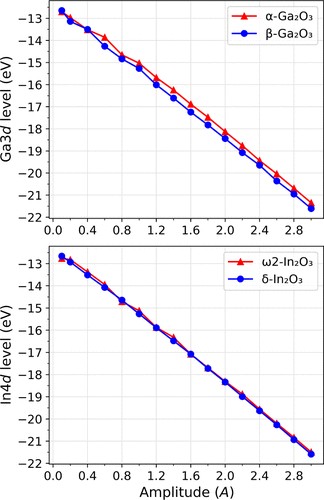
Figure 2. Average d-level position (in eV) of two Ga2O3 polymorphs (above) and two In2O3 polymorphs (below) as a function of amplitude A. The most stable phases, β-Ga2O3 and δ-In2O3 (in blue) and two metastable phases α-Ga2O3 and ω2-In2O3 (in red), are depicted. The VBM is used as energy zero.
DOI:
doi.org/10.1021/acs.jpcc.4c06718
